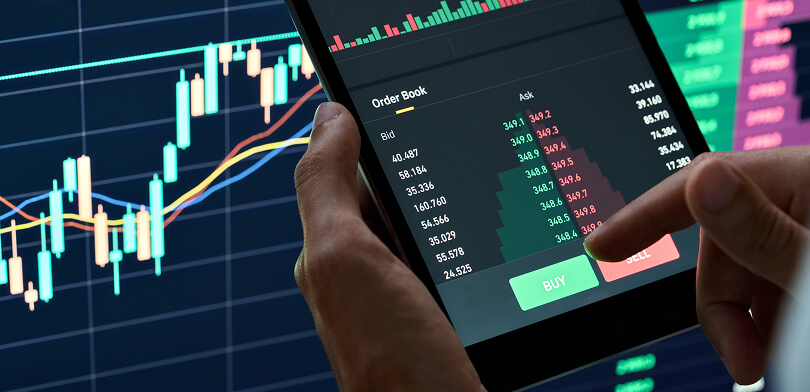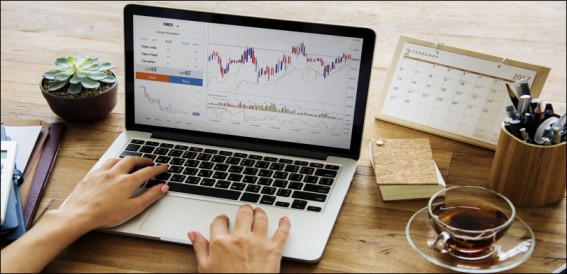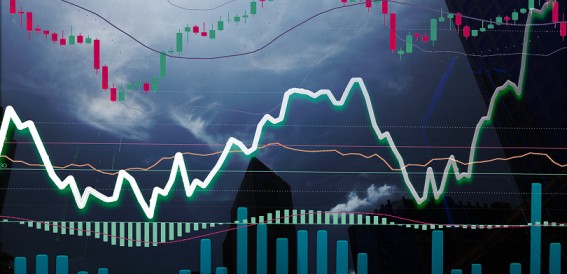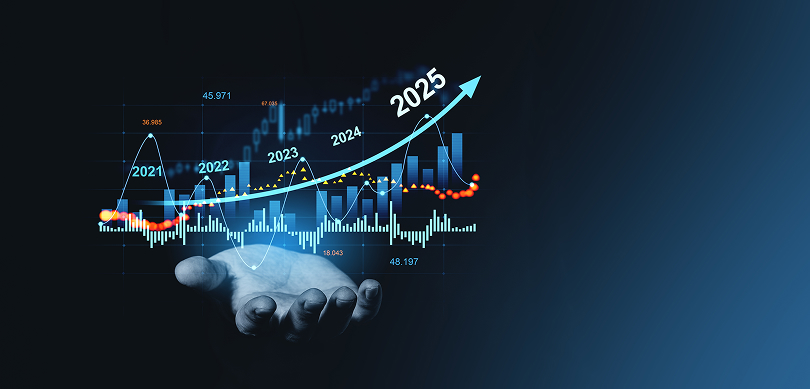Introduction
Commodities, the raw materials that form the backbone of our economy, offer a unique investment opportunity. Their prices are influenced by a complex interplay of factors, including supply and demand, geopolitical events, and economic indicators. Successful commodity trading requires a deep understanding of these dynamics and the implementation of well-crafted strategies. In this article, we will explore some of the most effective strategies for navigating the commodity markets and maximizing your potential returns.
Topics Covered :
Understanding Commodity Trading
Before delving into strategies, it is essential to understand the fundamentals of commodity trading. Commodity markets in India are regulated by the Securities and Exchange Board of India (SEBI), with the Multi Commodity Exchange (MCX) and the National Commodity & Derivatives Exchange (NCDEX) being the primary platforms for trading.
Commodities are broadly classified into two categories:
Hard Commodities: These include natural resources that are extracted or mined, such as gold, silver, crude oil, and metals.
Soft Commodities: These include agricultural products like wheat, sugar, coffee, and cotton.
Trading in commodities involves buying and selling futures contracts. A futures contract is an agreement to buy or sell a particular commodity at a predetermined price on a specified future date. The key to success in commodity trading lies in understanding the factors that affect the prices of these commodities and applying the right trading strategies.
Recommended Read: How to start commodity trading
Best Strategies for Commodity Trading
1.Trend Following Strategy
Trend following is one of the most popular strategies in commodity trading. The core principle of this strategy is to identify the direction in which the market is moving and trade in that direction. The idea is to capitalize on the momentum of price movements, whether upward or downward.
To implement a trend-following strategy:
Identify Trends: Traders can use technical indicators like moving averages, trendlines, and the Relative Strength Index (RSI) to identify trends. If the price of a commodity consistently moves in one direction over a period, it indicates a trend.
Moving Average Crossover: This is a common method used in trend following. For example, when a short-term moving average crosses above a long-term moving average, it signals a potential upward trend (bullish). Conversely, when the short-term moving average crosses below the long-term moving average, it signals a downward trend (bearish).
Patience and Discipline: Trend following requires patience, as trends can take time to develop. Traders must also have the discipline to exit trades when the trend shows signs of reversing.
2.Range Trading Strategy
Range trading involves identifying price levels at which a commodity typically trades within a range and buying at the lower end of the range (support level) while selling at the upper end of the range (resistance level). This strategy works best in markets that are not trending but moving sideways.
To implement a range trading strategy:
Support and Resistance Levels: Identify the support and resistance levels where the price of the commodity tends to bounce off or reverse. Support is the price level where demand is strong enough to prevent the price from falling further, while resistance is where selling pressure prevents the price from rising higher.
Oscillators: Oscillators like the RSI or Stochastic Oscillator can help determine whether a commodity is overbought or oversold, indicating a potential reversal within the range.
Stop-Loss Orders: Since range trading involves counter-trend trading, it is crucial to use stop-loss orders to minimize losses if the price breaks out of the range.
3.Breakout Trading Strategy
Breakout trading is a strategy that involves entering a trade when the price breaks through a significant support or resistance level. Breakouts often signal the start of a new trend, making this strategy particularly effective in volatile markets.
To implement a breakout trading strategy:
Identifying Breakout Levels: Traders need to identify key support and resistance levels, as well as price consolidation zones. A breakout occurs when the price moves decisively above resistance or below support.
Volume Confirmation: It is essential to confirm breakouts with trading volume. A breakout accompanied by high volume indicates strong buying or selling interest, increasing the likelihood of a sustained move.
Managing False Breakouts: Not all breakouts result in a trend. Some may be false signals, where the price quickly reverses after breaking out. To manage this risk, traders can wait for confirmation (such as a retest of the breakout level) before entering a trade.
4.Seasonal Trading Strategy
Many commodities exhibit seasonal price patterns due to factors like weather, planting and harvesting cycles, and seasonal demand fluctuations. Seasonal trading involves taking advantage of these predictable patterns.
To implement a seasonal trading strategy:
Research Seasonal Trends: Historical price data can reveal seasonal patterns in commodity prices. For example, the demand for natural gas often rises during winter, leading to price increases, while agricultural commodities may follow planting and harvesting cycles.
Timing: Timing is critical in seasonal trading. Traders should enter positions before the seasonal trend begins and exit before it reverses.
Fundamental Analysis: Along with historical trends, traders should consider fundamental factors that may influence seasonal patterns, such as weather forecasts, crop reports, and geopolitical events.
5.Spread Trading Strategy
Spread trading involves simultaneously buying and selling related commodity contracts to profit from the price difference between them. This strategy is particularly popular in the futures market and is considered less risky than outright trading, as it reduces exposure to market-wide price movements.
Types of spreads include:
Inter-Commodity Spread: Involves trading two related commodities. For example, traders might buy crude oil futures and sell heating oil futures, profiting from the price difference between the two energy commodities.
Intra-Commodity Spread: Involves trading futures contracts of the same commodity with different expiration dates (calendar spread). For instance, a trader might buy a December gold futures contract and sell a February gold futures contract.
Geographical Spread: Involves trading the same commodity in different geographical markets. For example, traders might trade Brent crude and WTI crude oil futures to capitalize on regional price differences.
6.Fundamental Analysis Strategy
Fundamental analysis involves studying the underlying factors that affect commodity prices, such as supply and demand, geopolitical events, weather conditions, and economic data. This strategy is particularly effective for long-term traders who focus on macroeconomic trends.
To implement a fundamental analysis strategy:
Supply and Demand Dynamics: Analyze factors that affect the supply and demand of commodities. For example, a drought may reduce the supply of agricultural commodities, leading to higher prices, while an increase in oil production may lower crude oil prices.
Geopolitical Events: Political instability, trade policies, and conflicts in commodity-producing regions can significantly impact prices. For instance, tensions in the Middle East often lead to fluctuations in crude oil prices.
Economic Indicators: Economic data such as GDP growth, inflation, and industrial production can influence commodity prices. A growing economy typically increases demand for commodities, leading to higher prices.
7.News-Based Trading Strategy
News-based trading involves making trading decisions based on breaking news and major events that can impact commodity prices. This strategy requires staying informed about global developments and reacting quickly to news that may affect the market.
To implement a news-based trading strategy:
Stay Informed: Traders need to stay up to date with news related to the commodities they are trading. This includes geopolitical events, natural disasters, policy changes, and economic reports.
React Quickly: News-based trading requires quick decision-making. Traders must be ready to enter or exit positions based on the impact of the news on commodity prices.
Avoid Overtrading: While news-based trading can be profitable, it can also lead to overtrading if traders react to every piece of news. It is essential to differentiate between significant news that will have a lasting impact and short-term noise.
8.Risk Management Strategy
Effective risk management is crucial in commodity trading, given the inherent volatility and leverage involved in futures trading. Traders must have a strategy to manage risks and protect their capital.
Key components of a risk management strategy include:
Position Sizing: Determine the appropriate position size based on the size of your trading account and risk tolerance. Avoid over-leveraging, as this can lead to significant losses.
Stop-Loss Orders: Use stop-loss orders to limit potential losses on a trade. A stop-loss order automatically closes your position when the price reaches a predetermined level.
Diversification: Diversify your trades across different commodities and markets to reduce risk. This helps to minimize the impact of adverse price movements in a single commodity on your overall portfolio.
Risk-Reward Ratio: Calculate the risk-reward ratio for each trade and ensure that potential profits justify the risk taken. A common rule of thumb is to aim for a risk-reward ratio of at least 1:2, meaning the potential profit should be twice the amount of the potential loss.
Conclusion
Commodity trading in India offers numerous opportunities for traders willing to navigate the complexities of the market. By employing the right strategies, such as trend following, range trading, breakout trading, and fundamental analysis, traders can maximize their chances of success. However, it is essential to complement these strategies with effective risk management practices to protect capital and minimize losses.
Ultimately, the best strategy for commodity trading depends on the trader’s goals, risk tolerance, and market knowledge. Whether you are a short-term trader focused on technical.
Recommended Read: Commodity Market Timing and Trading
















